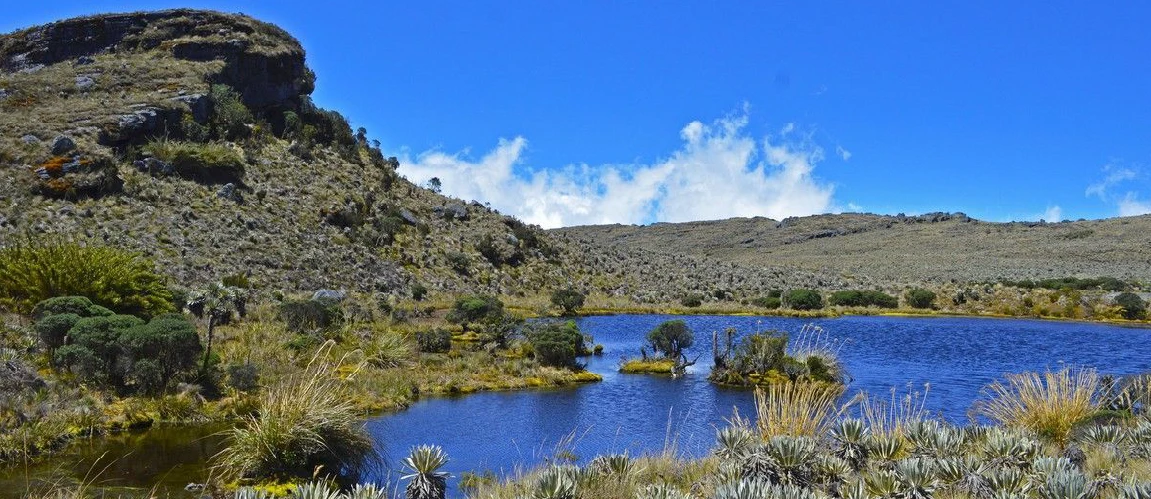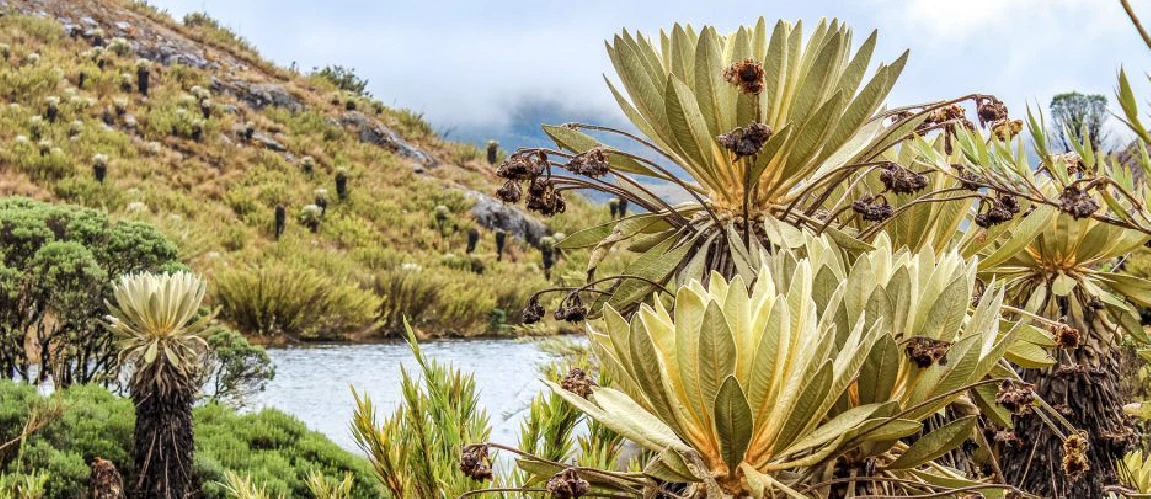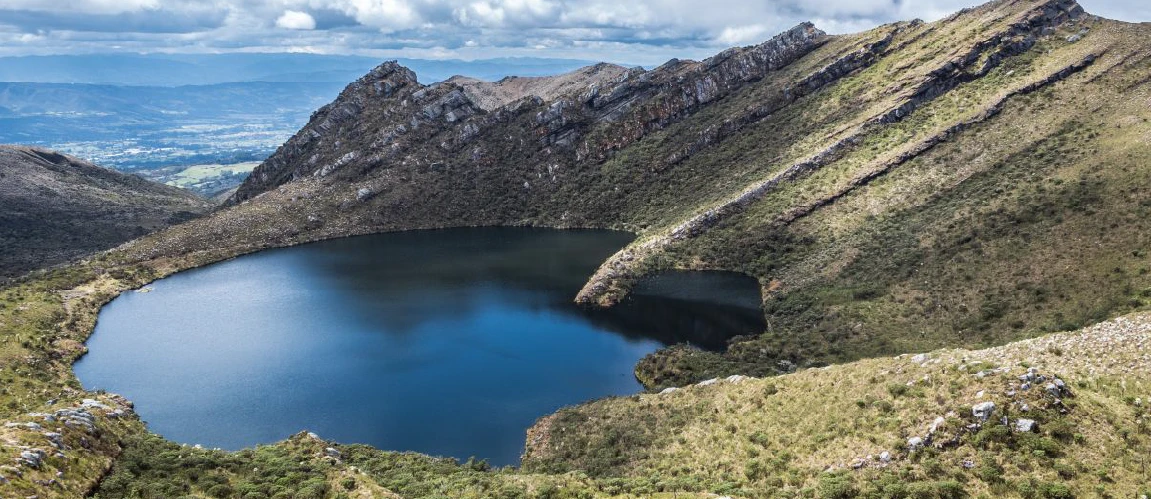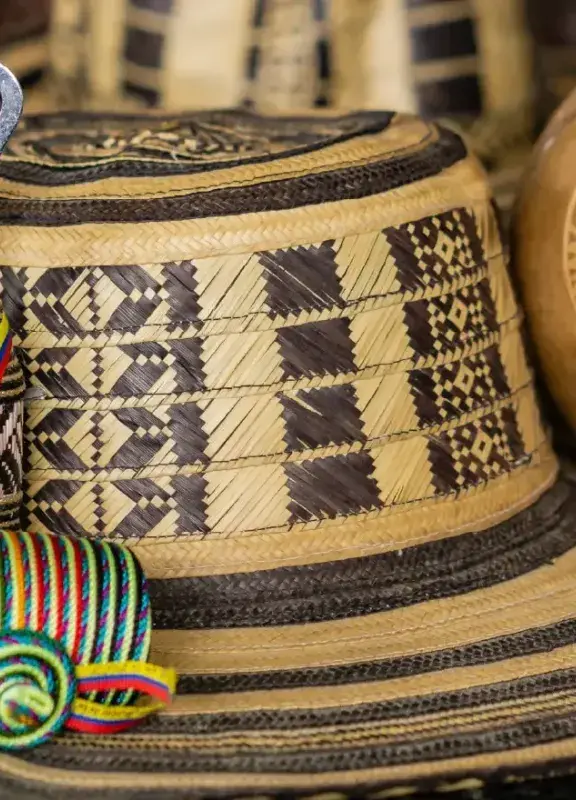Colombia moorlands: natural treasures in the country of beauty
Discover 5 enchanting moorlands in Colombia. Explore the unique beauty of our ecosystems in this article.
Colombia is a country of majestic landscapes and great biological diversity. Among its many treasures are the páramos, unique ecosystems located high in the mountain ranges, which give rise to one of the most important “water factories” in the world. In addition to supplying water, the páramos are a refuge for endemic species, legends, culture, and immense natural wealth. Below, we invite you to discover some of them, sanctuaries of diversity and sources of natural conservation.
1. Páramo de Sumapaz: natural sanctuary and the largest páramo in the world

Courtesy, roadtrip.travel
Páramo de Sumapaz, located in the Eastern Cordillera of Colombia, is the largest in the world, covering more than 333,420 hectares and reaching altitudes between 2,800 and 4,310 meters above sea level at the Nevado del Sumapaz peak. Among its glacial lagoons are Laguna de los Tunjos, Chisacá, Larga, La Guitarra, and Boca Grande, which give rise to rivers such as the Chisacá and the Ariari, which in turn feed basins that reach both the Magdalena and the Orinoco. This páramo also includes complexes of wetlands, peat bogs, and underground water sources.
Sumapaz preserves a unique biological diversity, with plant species such as the frailejón, chusque, mosses, and lichens, along with emblematic animals such as the spectacled bear, white-tailed deer, puma, páramo eagle, and páramo fox. In addition, Sumapaz provides drinking water for millions of people in Bogotá and nearby communities such as Pasca, San Bernardo, Cabrera, and Fusagasugá, thanks to its important role as a water regulator in the region.
You may also be interested in: Los Katios National Park, a wildlife sanctuary
2. Páramo de Santurbán: paradise of flora and fauna

Courtesy, aida-americas.org
Páramo de Santurbán is one of Colombia’s natural wonders, located just 72 kilometers from Bucaramanga. This ecosystem spans the departments of Santander and Norte de Santander and covers approximately 142,000 hectares of high mountain, peat bogs, lagoons, and steep peaks. It includes protected areas such as the Santurbán Regional Natural Park and the Berlín Páramo DMI. In addition, it is home to more than 450 plant species, many of them endemic, as well as a large number of fauna species, consolidating its importance as a key biological zone in the region.
The majestic landscapes of Páramo de Santurbán rise between 2,800 and 4,290 meters in altitude, with native species such as the Andean bamboo or chusque, which stand out among the local flora. In addition, this páramo is the birthplace of rivers such as the Zulia and the Suratá, which supply drinking water to Bucaramanga and more than 48 municipalities in the region, thus helping to maintain the water balance of the entire territory.
3. Páramo de Pisba: historical and cultural setting

Courtesy, parquesnacionaless.gov
Páramo de Pisba, located in the Eastern Cordillera, between the departments of Boyacá and Casanare, covers an area of approximately 106,243 hectares, with altitudes ranging from 3,100 to 4,100 meters above sea level. In addition, this ecosystem is an important water star, as rivers such as the Cravo Sur and the Pauto originate here, supplying water to both Boyacá and Casanare. Páramo de Pisba also has more than 30 lagoons, such as El Tendido and Lago Picachos, which beautify the landscape and maintain the region’s water balance.
This Colombian páramo, historically famous for witnessing the passage of the Liberator’s Route, is also a biodiversity treasure. It hosts emblematic plant species such as the frailejón, the tree Polylepis quadrijuga, and the Puya santosii, as well as birds and mammals such as the spectacled bear and the white-tailed deer. In this way, Páramo de Pisba stands out as a natural paradise and a major water source in Colombia, high in the Eastern Andes.
You may also be interested in: Five Colombian reserves to coexist with birds
4. Chingaza National Natural Park: place of biodiversity

Courtesy, icn.org
Chingaza National Natural Park is a natural and cultural treasure in central Colombia. The magic of its mountains preserves secrets and knowledge inherited from the Muiscas and Guayupes —indigenous peoples who protected this territory— as well as peasant communities that have lived here for more than 40 years. Located in the Eastern Cordillera of Colombia, Chingaza ranges from 800 to 4,050 meters in altitude, forming a landscape of páramos, lagoons, peat bogs, and high Andean forests.
Páramo de Chingaza is vital for Bogotá: it provides approximately 80% of the drinking water consumed in the city. Among its most emblematic lagoons are Laguna de Chingaza, the Chuza Reservoir, and the Siecha Lagoons, in whose waters one of the pre-Hispanic rafts of the Legend of El Dorado was found. In addition, the páramo is home to endemic species such as Espeletia uribei, peat mosses, and diverse fauna such as the spectacled bear, deer, and Andean condors, reflecting the richness of this ecosystem.
5. Puracé National Natural Park: cradle of rivers and wildlife refuge

Courtesy, Mochiliante
Declared a UNESCO Biosphere Reserve in 1979, Puracé National Natural Park is the birthplace of Colombia’s main rivers: Magdalena, Cauca, Patía, and Caquetá. It spans the departments of Cauca and Huila, covering approximately 76,600 hectares, and rises from 3,000 to 4,670 meters above sea level, with its highest point being Pan de Azúcar Volcano. Within this protected area lies the volcanic chain of the Coconucos, with Puracé Volcano as its most representative peak, along with others such as Sotará, Piocolló, Quiriquinga, Calambás, Paletará, and Pucará, which create a landscape that seems from another world.
This ecosystem is home to more than 50 lagoons and has impressive biodiversity: it harbors unique plant species such as pajonales and frailejones. Its ecosystem is also diverse and includes mammals such as the spectacled bear, the páramo tapir, rabbit deer, red deer, squirrels, and a wide variety of birds such as the Andean condor.
Protect and preserve Colombia’s páramos
Colombia’s páramos are true sanctuaries of life and history. From the imposing Páramo de Sumapaz to the volcanic landscapes of Puracé, each of these ecosystems represents a natural treasure that sustains biodiversity, regulates climate, and feeds vital rivers that supply millions of people. They are home to unique species such as the spectacled bear, white-tailed deer, frailejón, and Andean condor, making them key spaces for environmental conservation. That is why their protection is essential to guarantee the ecological balance and water security of the country. Exploring these landscapes is an opportunity to reconnect with nature, value our natural wealth, and understand why Colombia is, without a doubt, the Country of Beauty.
 Welcome, you are in
Welcome, you are in 













